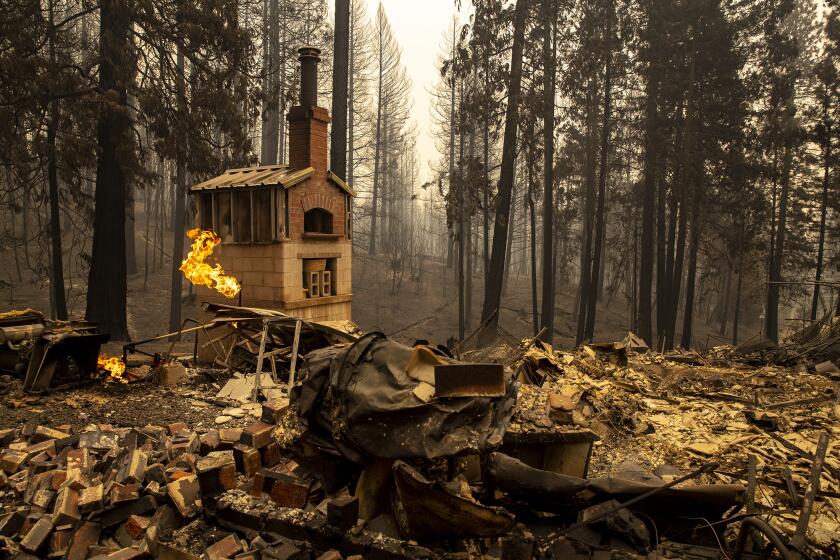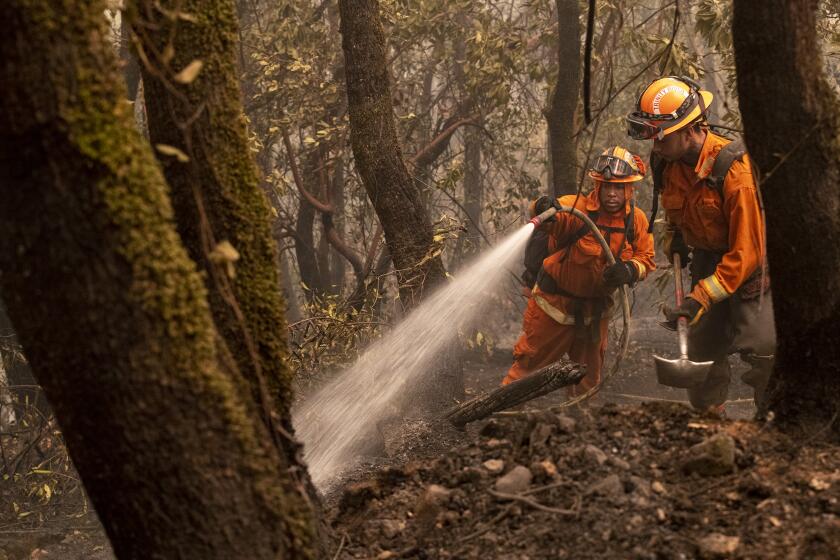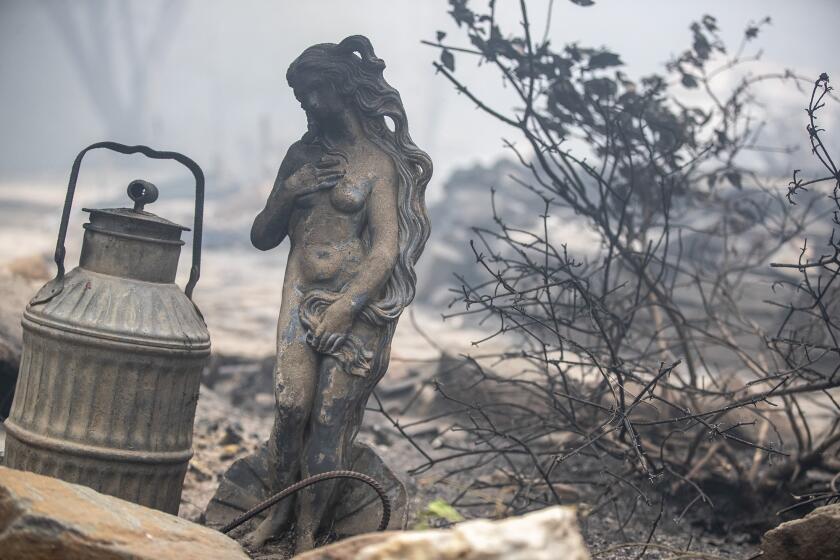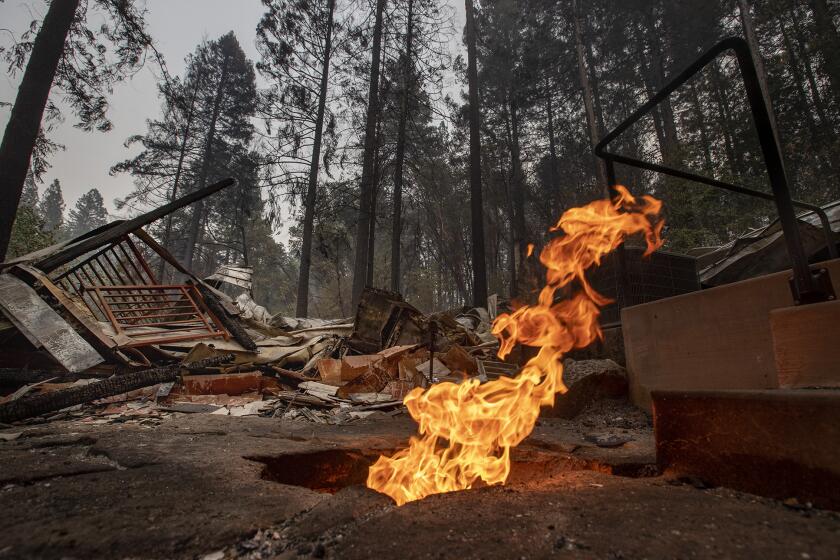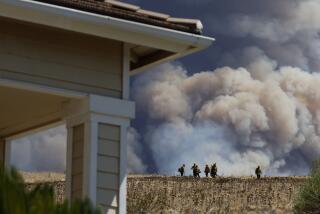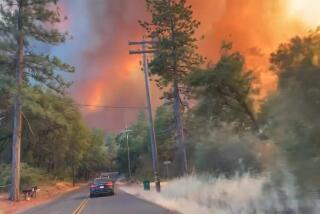‘A tsunami of fire’: North Complex fire victims couldn’t outrun or hide from the flames
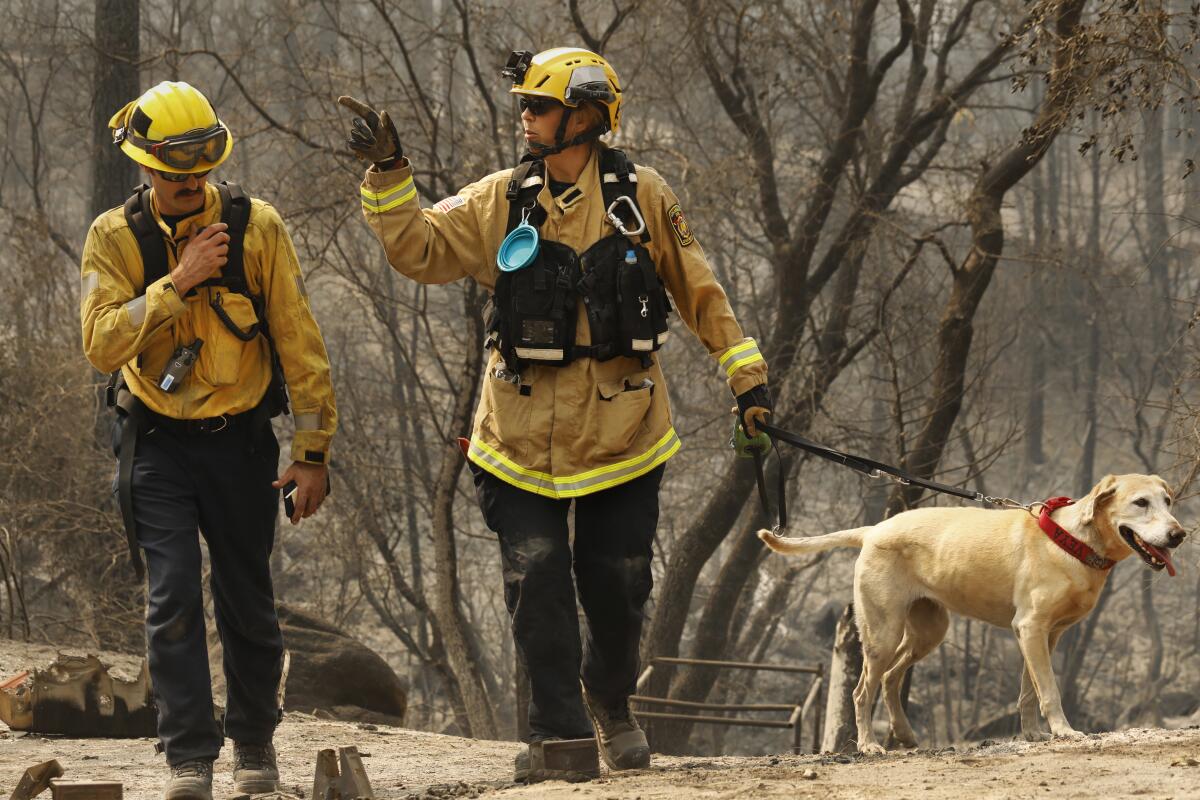
BERRY CREEK, Calif. — As a rapidly growing wildfire barreled toward Lake Oroville, residents of the small mountain communities lying in its path had to decide what to do.
Two told their families they planned to seek shelter at a nearby pond. Another said he would leave only when he could see the fire from his home.
Three others were ready to evacuate, only to hold off based on incorrect information about how much the blaze was contained.
All of those people, along with nine others, ultimately fell victim to the North Complex fire, a massive blaze that exploded last week into one of the deadliest and most expansive conflagrations California has seen.
While crews continue working furiously to contain the blaze — now the fifth-largest and among the deadliest in recorded state history at more than 284,000 acres — and assess the extent of the devastation left in its wake, information has begun to trickle in about those who paid the ultimate price.
Winds created a blowtorch effect that blasted a Northern California spot fire into a wildfire crews couldn’t stop as it raced for Butte County hamlets.
Much is unclear, and two of the victims have not been officially identified. But the initial details of those who perished illustrate the speed and ferocity with which the fire moved, differences in residents’ response to evacuation orders and how, for some, inaccurate or incomplete information may have been the difference between life and death.
Butte County Sheriff Kory Honea said Thursday evening that only one person reported missing is still unaccounted for — a promising sign the death toll might not climb higher.
“Our efforts to really get out and start searching areas has increased dramatically,” he said during a briefing, adding: “Because we’re covering a lot more ground, and that number [of fatalities] is staying steady, that gives me some hope.”
Even so, only four California fires have killed more people than the North Complex.
The victims who have been identified range widely in age: from 16 to 79. Most lived in Berry Creek, a mountain hamlet northeast of Oroville, while two hailed from nearby Feather Falls.
Both towns found themselves in the crosshairs of the blaze’s astonishing and horrifying advance. The fire’s growth, at times estimated at about 2,000 acres an hour, sent crews scrambling to implement a plan of attack and forced some 20,000 residents in Butte, Plumas and Yuba counties to flee.
Amid the chaos, evacuation orders came by surprise, went unheeded in some corners and were impaired by a power outage, previous Times’ reporting showed.
A timetable of official response shows authorities were slow to warn those downwind of the Bear fire of the firestorm firefighters knew was likely.
Philip Rubel, 68, and Millicent Catarancuic, 77, were among those who prepared to flee Berry Creek as the fire approached.
“They had packed their belongings in preparation to evacuate but later decided not to evacuate based on erroneous information the fire was 51% contained,” Honea said previously.
In fact, the fire was 51% contained as of the morning of Sept. 8, according to the U.S. Forest Service, but as it raced toward Berry Creek, it grew larger and faster, swallowing additional acres of wildland. As of Thursday evening, the fire’s containment was 40%.
Rubel and Catarancuic’s bodies were found Sept. 9 in the area of Graystone Lane and Coyote Road, according to the Butte County Sheriff’s Office.
Rubel’s body was inside a charred Toyota pickup and Catarancuic’s remains were found down an embankment. A second vehicle was found nearby, resting against a large rock.
“They clearly tried to make some escape, and it was an escape that was too late,” said their nephew Zygy Roe-Zurz. “They almost made it to the main road.”
Roe-Zurz learned Thursday that his mother — Suzan Violet Zurz, 76 — had also perished. She had been missing for more than a week.
Suzan Violet Zurz, Rubel and Catarancuic lived together about a half-mile up Graystone Lane, a rugged dirt road that exited near the town’s Village Market.
In Oklahoma, a medical student awaits word on the fate of his mother, one of those missing after a ferocious fire tore through a Butte County.
On Sunday, a detective had told Roe-Zurz that a third set of remains had been found near the doorway of the family’s burned-out house, but DNA identification was delayed. The unwelcome news came just before her death was released publicly.
Roe-Zurz said the three had packed two cars and were searching for a missing cat, but then saw information online that led them to believe the fire was not an immediate threat. He is uncertain whether they received evacuation orders on their cellphones, but knows that they began to unpack, thinking they would be safe staying.
He lost communication with them after that, about 7 p.m., and doesn’t know what eventually sent them fleeing.
He is also upset with Honea’s statements that his family relied on erroneous information. He thinks the situation is “not that simple” and that it’s important to learn when evacuation orders were sent and who received them.
“I am a scientist, and I was online and I couldn’t tell a tsunami of fire was coming toward my family,” he said. “I am not trying to blame anyone, but I am resisting people blaming my family, that they are to blame fully for what happened. I have a huge problem with that.”
Honea said Thursday that “we do not know how they came to believe that, we don’t know what source of information they accessed to formulate that opinion” that the fire was better contained than it actually was, but said his “condolences go out to Ms. Zurz’s family.”
Other Berry Creek residents were more reluctant to evacuate, officials said.
The body of Mark Delagardie, 61, was found Monday at his home on Bean Creek Road. A friend had asked authorities to check up on him, according to Honea, because Delagardie had “ignored evacuation orders and chose to stay at his residence.”
When he spoke with his family by phone on the night of Sept. 8, Kin Lee told them “he was aware of the fire and that he would evacuate if flames became visible,” Honea said.
The 64-year-old’s body was found two days later in the area of Starcrest Lane.
John Butler, 79, and Sandra Butler, 75, had told their family “they were going to seek refuge from the fire at a pond near their residence,” the sheriff said. Their bodies were later found near their home.
Khawar Bhatti, 58, was also found dead at a Berry Creek home on Sept. 10, sheriff’s officials said, while the body of Jorge Hernandez-Juarez, 26, was located Sunday at a property on Milsap Bar Road.
Others were found in or near vehicles, overcome as they tried to flee the flames.
Those include Paul Winer, a 68-year-old Berry Creek resident, and Randy Harrell, 67, of Feather Falls.
Josiah Williams, 16, is by far the youngest confirmed fatality in the North Complex fire. His father, Justin Williams, previously told The Times that JoJo, as he was affectionately known, and his older brother were supposed to leave the family home in Berry Creek in their respective cars on Sept. 9, but that the younger boy wasn’t able to escape.
A 16-year-old boy who lived with his father in Berry Creek is among 10 people killed in the blaze, now among the state’s deadliest.
Officials have said the fire’s “historic run” started Sept. 8, when it jumped the middle fork of the Feather River and quickly morphed into a rampaging beast.
“The fire ran from Cleghorn Bar to Lake Oroville as winds, terrain and dry fuels came into perfect alignment,” Jay Kurth, incident commander for California Interagency Incident Management Team 4, wrote in a public letter Wednesday. “The spot fire traveled more than 30 miles in 16 hours and spotted across Lake Oroville.”
It ended up moving “20 miles beyond all fire prediction models identified,” he wrote.
“Large clusters of spot fires were joining so rapidly that huge areas were igniting at once, creating a very dangerous fire environment.”
Given the swiftly evolving situation, officials have said they did everything possible to get people out of harm’s way.
“We did the best job that we could, given the resources and time that we have,” Honea said previously.
“That said, as I have said many, many times before, there is no way to guarantee 100% saturation of your message,” he added. “There’s no way to guarantee perfection. It’s particularly difficult when we’re dealing with communities in remote and rural areas that are hard to get to and sometimes have spotty coverage.”
While the fire hasn’t seen anywhere near the explosive growth that last week wrought, the danger is far from over.
A new mandatory evacuation order was issued Thursday for Meadow Valley, a community of several hundred in Plumas County.
Jake Cagle, an operations section chief on the fire, urged residents to heed the latest call to evacuate.
“If we have people trying to evacuate late, or waiting for the fire front, until they see fire ... that impedes our progress to save your structure or to save anything around your area,” he said in a video briefing Thursday.
More to Read
Sign up for Essential California
The most important California stories and recommendations in your inbox every morning.
You may occasionally receive promotional content from the Los Angeles Times.
